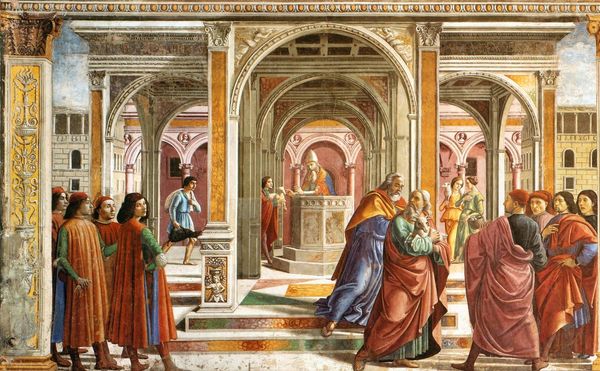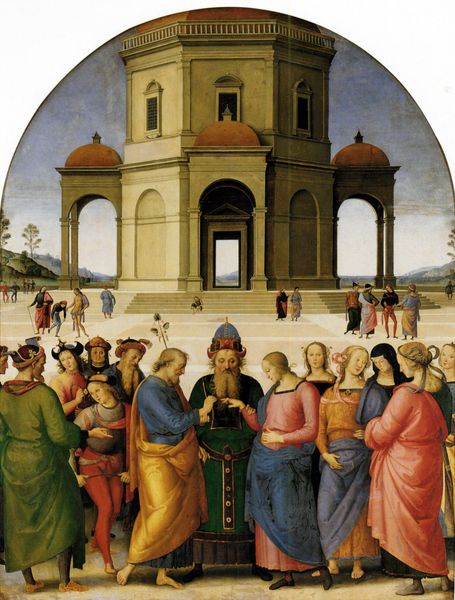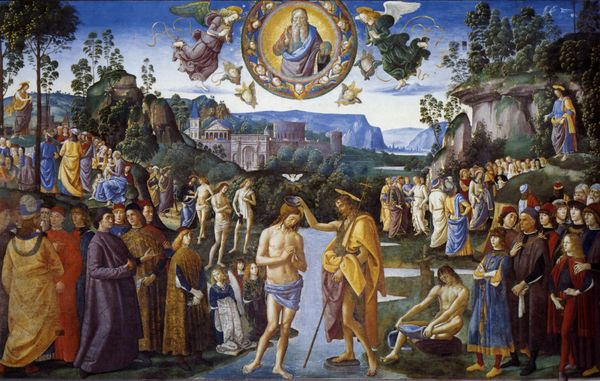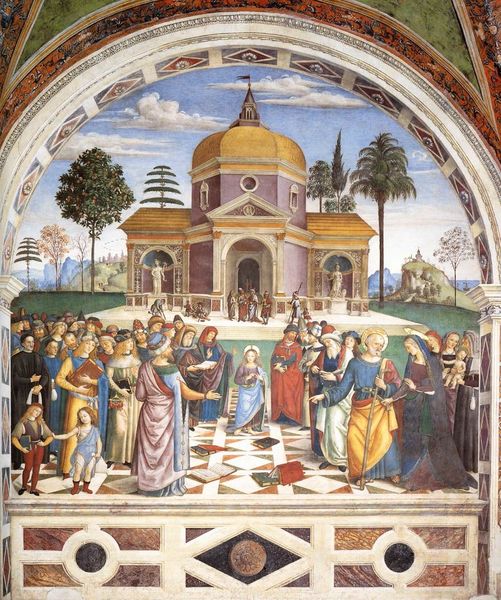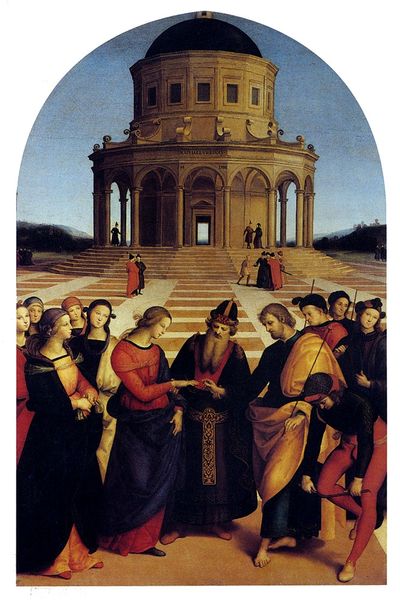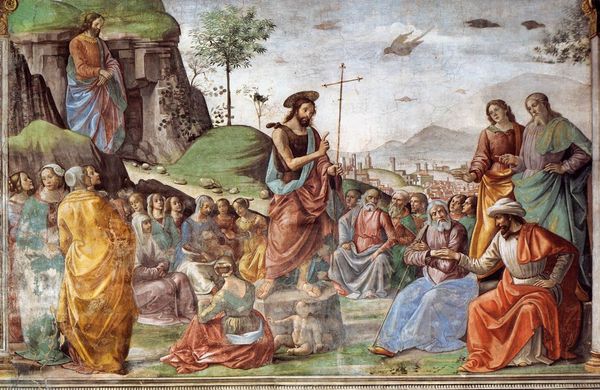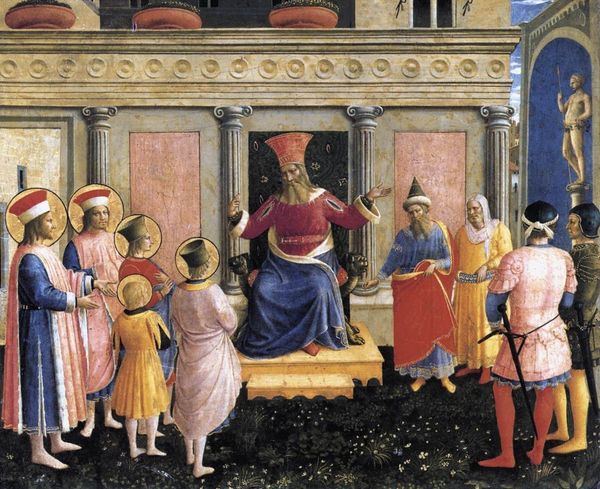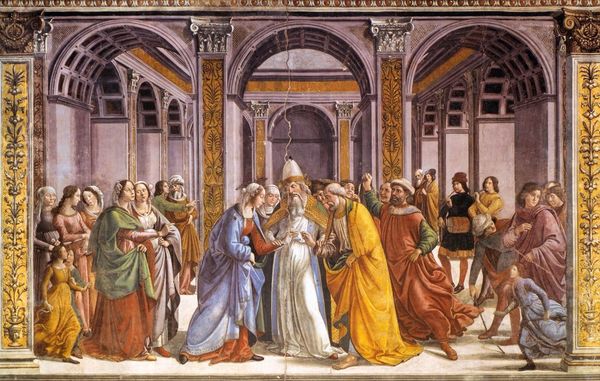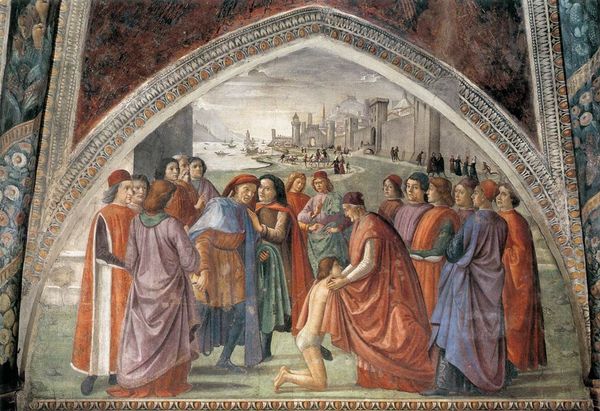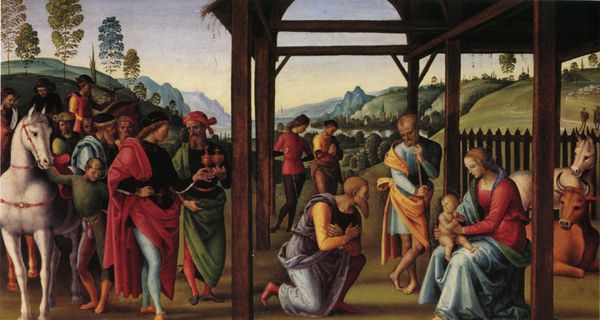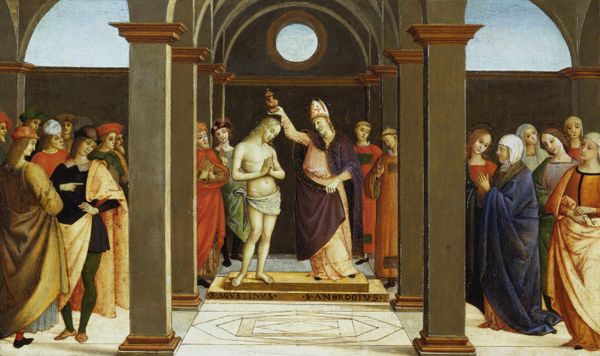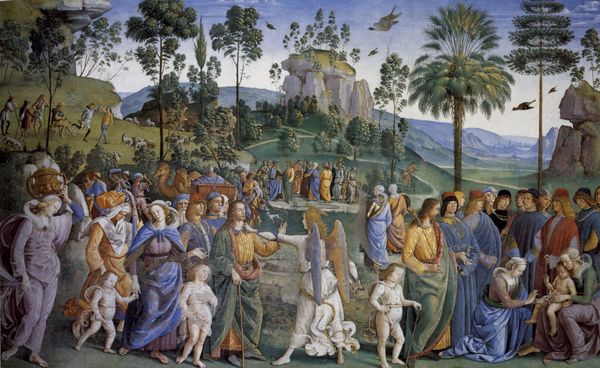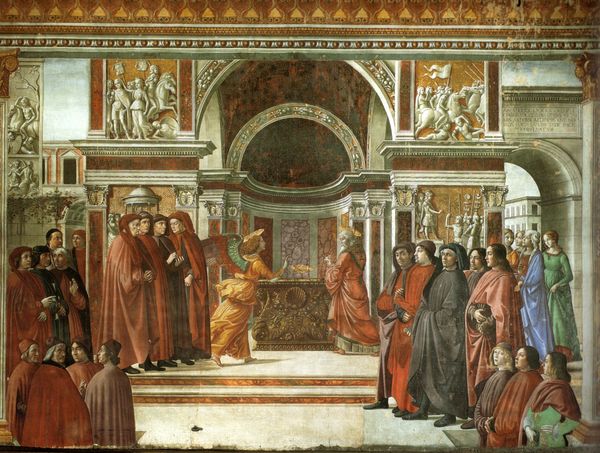Christ Handing the Keys to St. Peter 1482
🔒Audio guide available with collection purchase
panel, painting, oil-paint, fresco
#
portrait
#
high-renaissance
#
panel
#
narrative-art
#
painting
#
oil-paint
#
landscape
#
holy-places
#
perspective
#
figuration
#
fresco
#
oil painting
#
jesus-christ
#
chiaroscuro
#
christianity
#
history-painting
#
academic-art
#
italian-renaissance
#
realism
Dimensions: 335 x 550 cm
Copyright: Public domain
Comments
No comments
Be the first to comment and join the conversation on the ultimate creative platform.

